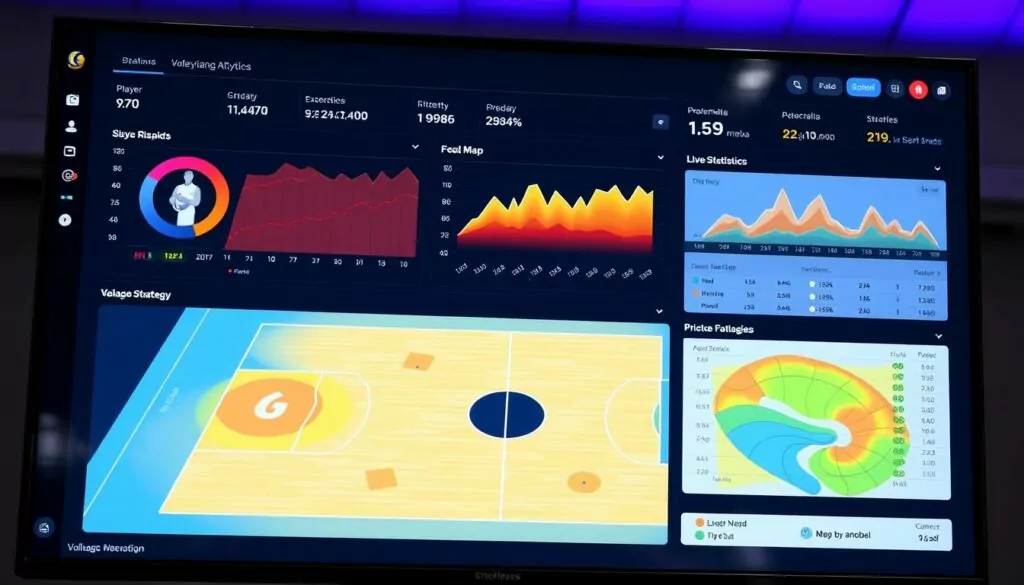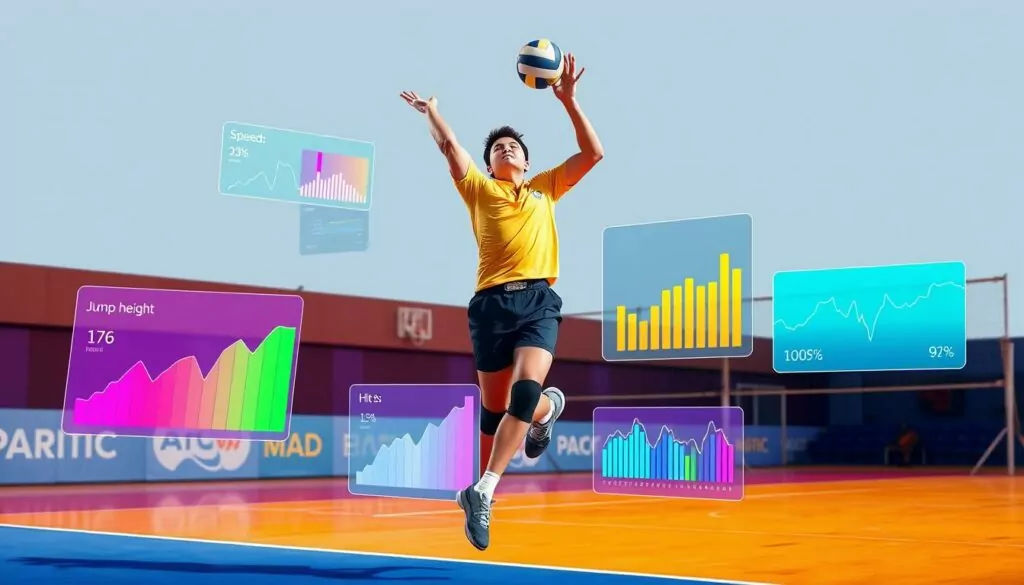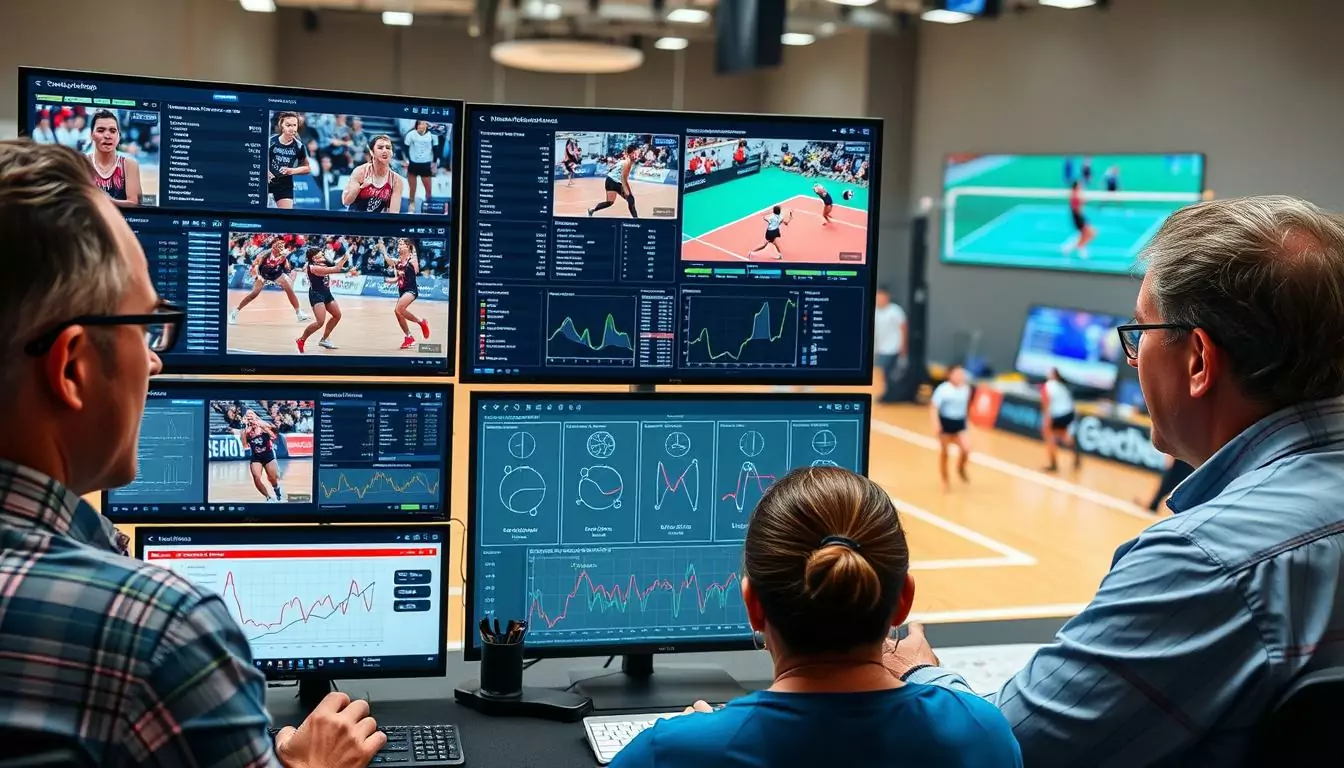Top volleyball teams analyze over 1,000 data points per match. This shows how deep volleyball analysis goes in pro sports. I’ve mastered breaking down every serve, spike, and block as an expert analyst.
My approach blends keen observation with cutting-edge sports analytics. It’s both an art and a science. I evaluate game performance using tried-and-true methods and new techniques.
Successful analysis starts before the first whistle. I study pre-game stats, team histories, and player profiles. This gives me a solid foundation for in-game insights.
During matches, I watch multiple screens. I track real-time data and note strategy shifts. This helps me understand the game’s flow and team tactics.
After the game, I dive into the numbers. I piece together what led to victory or defeat. This deep dive reveals crucial insights for future strategies.
My toolkit for volleyball analysis keeps growing. I use special software to crunch numbers and spot patterns. But the real magic happens when I mix tech with experience.
This blend helps me find trends others might miss. It’s not just about data – it’s about understanding the game’s nuances. Continuous learning keeps my analysis sharp and relevant.
Key Takeaways
- Professional volleyball analysis involves over 1,000 data points per match
- Pre-game preparation is crucial for effective game performance evaluation
- Real-time tracking and post-game review are key components of sports analytics
- A combination of technology and experience yields the best analytical results
- Continuous learning and adaptation are essential in volleyball analysis
Pre-Game Preparation and Essential Tools

Preparing for volleyball game analysis requires careful planning and the right tools. I’ve refined my approach over years of experience. My pre-game routine and gear ensure I capture every crucial play.
Statistical Software and Analysis Apps
I use advanced volleyball analytics software to crunch numbers and spot trends. DataVolley helps with real-time stats during games. VideoTagger is great for marking key moments during playback.
These tools help me break down complex plays into easy-to-understand data points.
Setting Up Recording Equipment
Quality footage is crucial for in-depth analysis. I set up multiple cameras to capture different court angles. My game recording equipment includes:
- High-speed cameras for slow-motion replays
- Wide-angle lenses to cover the entire court
- Tripods for stable shots throughout the match
Creating Analysis Templates
I’ve created custom performance analysis templates to streamline my workflow. These templates cover various game aspects:
| Template Type | Focus Area | Key Metrics |
|---|---|---|
| Serving Efficiency | Service Performance | Aces, Errors, Opponent Pass Quality |
| Attack Patterns | Offensive Strategies | Kill %, Shot Selection, Set Distribution |
| Block Effectiveness | Defensive Impact | Stuff Blocks, Touch %, Defensive Positioning |
These tools and templates prepare me for in-depth volleyball analysis. I’m ready to capture every spike, dig, and strategic move.
This setup allows me to analyze the game’s outcome thoroughly. Every detail is important in understanding the match’s flow.
Volleyball Game Analysis Techniques and Methods

I use various techniques to analyze volleyball games. My approach mixes numbers with observations. This creates a full picture of the game’s performance.
Breaking Down Player Performance Metrics
I start by looking at player stats. This includes kills, blocks, digs, and aces. I also check efficiency ratings for attacks and serves.
These numbers help spot top players. They also show where players can improve.
Analyzing Team Formation Patterns
I study how teams position players on the court. I watch how these formations change during play. This shows strategies for both offense and defense.
Tracking Service and Reception Efficiency
I track serve types, speeds, and placement. On defense, I look at how teams handle serves. This data helps improve serving and receiving skills.
Evaluating Attack Combinations
Attack strategies are key in volleyball. I study different combinations and their success rates. This helps teams create better offensive plays.
Measuring Defensive Positioning
For defense, I focus on player positioning. I track how defenders read the offense. This info helps improve team and individual defense.
These methods create a detailed game picture. Coaches and players can see their strengths and weaknesses. This leads to better training and game plans.
Conclusion
My volleyball game analysis process helps teams improve their performance. It breaks down player metrics, team formations, and attack strategies. This approach leads to better volleyball performance through data-driven decisions.
Game analysis is a powerful tool for strategic planning. It helps teams prepare for upcoming opponents and adapt their tactics. Teams can fine-tune their gameplay by studying service and reception efficiency.
Teams that use comprehensive game analysis see great results. Player development and team strategies improve significantly. Thorough game analysis is becoming essential for successful teams.
It paves the way for more victories and stronger performances. As volleyball evolves, this tool will be crucial for teams aiming to excel.
